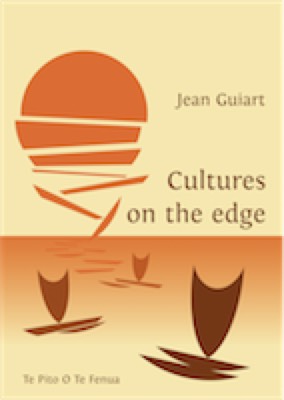
Cultures on the edge
Caught between the White Man's concepts of Polynesia opposed to Melanesia. From Efate to Epi, Central Vanuatu
A wrong idea has reigned for two centuries on Oceanic studies, the one that Polynesian island civilisations were superior to the ones of the Melanesian islands, dominated by barbaric customs, where neighbour tribes were the enemies of one another, cruel chiefs’ and sorcerers’ will was supreme, and cannibalism the law.
Multiple anthropological studies of the best quality tended to show that all this was the fruit of a wild imagination by Europeans having no experience whatsoever of the the so called «black islands», peopled by black people who could only be primitives. The Polynesians, because they were the first to have accepted Christianity, and being more or less enthusiastic auxiliaries of colonisation as sailors, soldiers, Christian teachers and later pastors of the different faiths proposed, were considered to be superior to other islanders. Sure, they were in a way less slow witted than most colonial whites, and survived more easily in tropical isles because they did not, at that time, mix as freely as the Europeans malaria and alcohol and were less avid of the not quite honest colonial money.
But mostly, they were the same people as the Melanesians, eating the same foods (taro and yams brought from Asia, bananas, sugar cane and breadfruit created on the spot), building their housing with the same materials, cultivating the same crops, the same fruit trees and tiare flowers, having recourse to the same medicinal plants (brought from South Asia), fishing in exactly the same way and dealing inidentical fashion with the hurdles of everyday life.
This identity has one single reason, Polynesians and Melanesians have exactly the same roots, Polynesians being the desendants of those Melanesians who have followed, in small numbers at the start, the urge to cross over the great span of sea bringing them to Fiji, Tonga and Samoa from their departure point in the Eastern Solomons, Central Vanuatu, the Loyalty islands and New Caledonia. Their slightly different physical aspect is due to the simple fact that they took with them only a fraction of the genetic heritage of the Melanesians (the founder effect) and that they slowly changed from dolicocephalic to brachycephalic skulls (by genetic drift). In different points of Melanesia, they had already attempted to change the shape of their skulls. Nevertheless, many Eastern Melanesians, speaking Melanesian tongues, are not distinguishable from the Polynesians. Melanesian descent lines became Polynesian through going further than the usual island from island journey, the next island being seen at the very least from the top of the coastal hills.
From the Santa Cruz islands to northern Vanuatu, the longest journey is two days from Tikopia to the isolated island of Vatganay, where the crew stops to cook and clean the garden of coconut trees and taro for the next visitors. Then they change course so as to make land on one of the central islands of the Banks group and later go to Mota Lava, where there is a marriage between Tikopia and this island at each generation.
Jean Guiart shows here how the people of South Central Vanuatu, from the islands of Efate to Epi, are the real direct ancestors of the Western Polynesians.
Ask for download link More free booksConditions
We offer the books mentioned on this page for free download as a PDF file if you send us request. Please enter your name and address and the title of the book you wish to download by clicking here. We will send you the download link by email.
